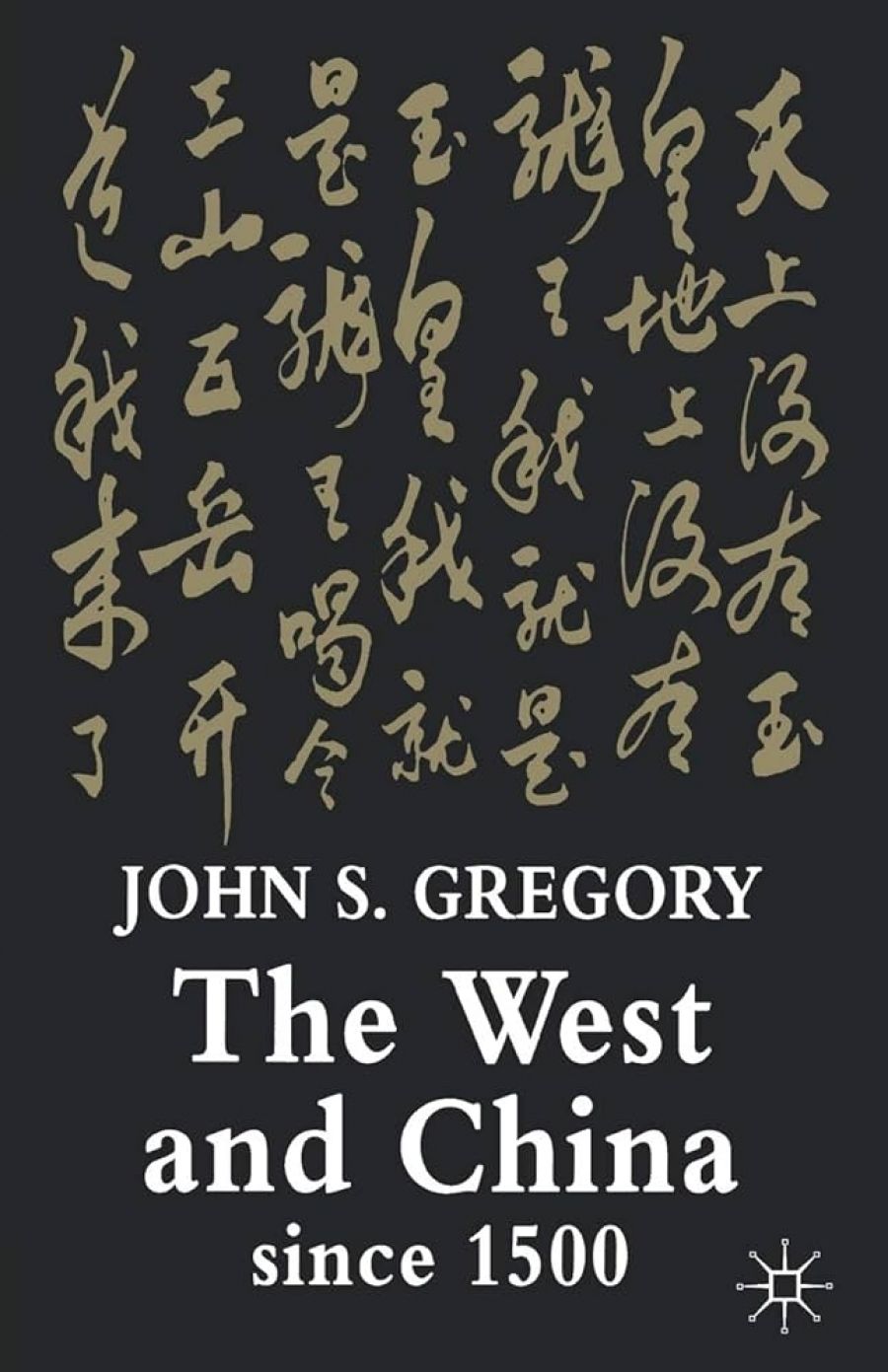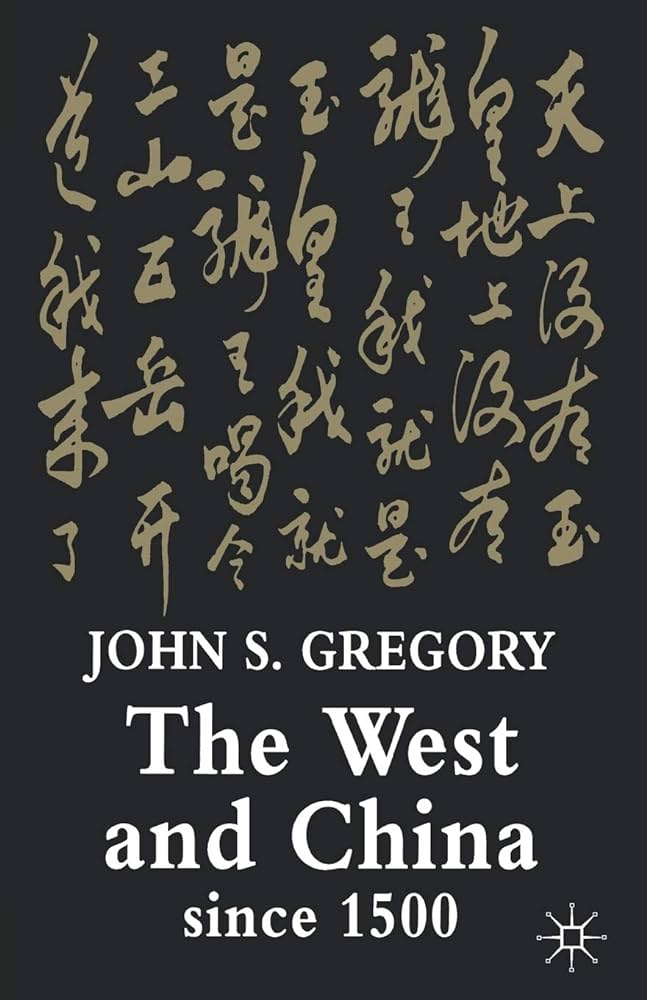
- Free Article: No
- Contents Category: History
- Review Article: Yes
- Article Title: In Search of Common Ground
- Online Only: No
- Custom Highlight Text:
Jack Gregory has devoted much of his long career in China studies to teaching and studying the ways in which the West and China have interrelated. He is well qualified to write on the subject. Classes that Gregory has given in Melbourne to students attending University of the Third Age classes have inspired this book. In style and structure, it is highly suitable for teaching. The writing is clear, interesting and accessible. Though the book could have done with some pictures, it does have a map and the presentation is attractive.
- Book 1 Title: The West and China since 1500
- Book 1 Biblio: Palgrave Macmillan, $56pb, 272pp, $157hb
- Book 1 Cover Small (400 x 600):

- Book 1 Cover (800 x 1200):

The aim is to discuss the interrelationships between the West and China since 1500. Gregory claims that his focus is Western culture, rather than Chinese, including how Western peoples have reacted to China, how they have treated it and what they have gained from it. However, there is far more about the details of Chinese history than there is about the histories of Western countries.
Gregory’s periodisation is interesting. After an introductory chapter, which emphasises differences between the West and China, there are three chapters subdivided both chronologically and topically. The three centuries after 1500 show the West and China ‘coming together, rather slowly and on China’s terms’, while the nineteenth century features ‘closer encounters, on the West’s terms’. Gregory sums up the twentieth century as ‘hither and thither, in search of comfortable common ground’. I have no quarrel with these characterisations. Gregory concedes that the precise centuries are open to question, but generally makes out a good case for his choices. For instance, there is a body of scholarly opinion that regards the Boxer Uprising of 1900 as a major turning point in Chinese history, and Gregory goes along with it, rightly, in my opinion. I am less convinced by his lumping the whole of the twentieth century into one chapter, with the implication of downgrading the importance of the Chinese Communist Party’s victory in 1949. It may be true that this event is like a mountain – the further you get away from it, the less it looms – but I would still argue that the significance of 1949 is immense.
This book is not primary research, and does not claim to be. This does not make it unscholarly. The book is annotated, and there is a bibliography that shows command of the topic. There are weaknesses in the annotation. For instance, on page fifteen, Gregory should have attributed the term ‘high equilibrium trap’ to Mark Elvin, who coined the term to explain why China failed to progress as rapidly as Europe since 1500. However, on the whole, the annotation is scholarly and entirely appropriate to the book’s style. Gregory’s way of presenting material is also scholarly. He loves to take up issues, presenting one or more authorities’ points of view and then putting forward his own perspective. Frequently, he sides more with one view than another, but almost always sees merit in differing viewpoints. This is a good way of proceeding, especially for a teacher, because it makes issues clear to students.
One illustrative example comes in the conclusion. Gregory suggests that the contacts between the West and China can be seen as ‘a clash of civilizations, with the West the main troublemaker’. But he goes on to suggest that the last few centuries have seen a process of coming together, ‘to the enrichment of both traditions’. He prefers this rather more positive interpretation, especially since he argues that China’s this-world-centred intellectual tradition is well attuned to the post-Enlightenment secular West. Just looking around the world at present, there does seem a better chance for long-term West–China cooperation than with several other major civilisations, such as Islam. It may be a big generalisation to point to the secular tradition as a reason why cooperation is possible, but it seems to me defensible all the same.
Indeed, one of the things I like about this book is the coverage it gives to big historical questions. There are plenty to ask about interactions, differences and similarities between the West and China. Gregory takes up quite a few, and does a good job in explaining the complexities.
One case in point can serve as illustration. Some historians, such as the late ANU sinologist C.P. FitzGerald, believed that the differences between the physical geography of China and Europe explain why China has remained a united state for most of its history since the third century BCE to the present, whereas Europe never regained lasting unity after the fall of the Roman Empire. How big a part does geography play in history? Gregory’s answer here is that ‘there is a little more geographical coherence about China … than there is about Europe’, but he also believes that there are many other factors more important than geography and that history could have gone a different way. China could have split up and we might be talking about several countries now in the territory of the People’s Republic of China, not just one.
Gregory has analysed the situation correctly. The physical environment does indeed have a big influence on a country’s history – even on its culture. But it is only one factor among many. The influence of geography should not lead to a deterministic conclusion. Chinese history could have been different, and so could the history of other places, despite the unchanging physical environment.
Overall, this is an excellent book. I recommend it to general readers and students alike. There can be no doubt about Jack Gregory’s command of history or about his ability to communicate it to non-specialists. This is not a particularly cheap book, a fact that could influence how well it sells. But it deserves to sell well.


Comments powered by CComment